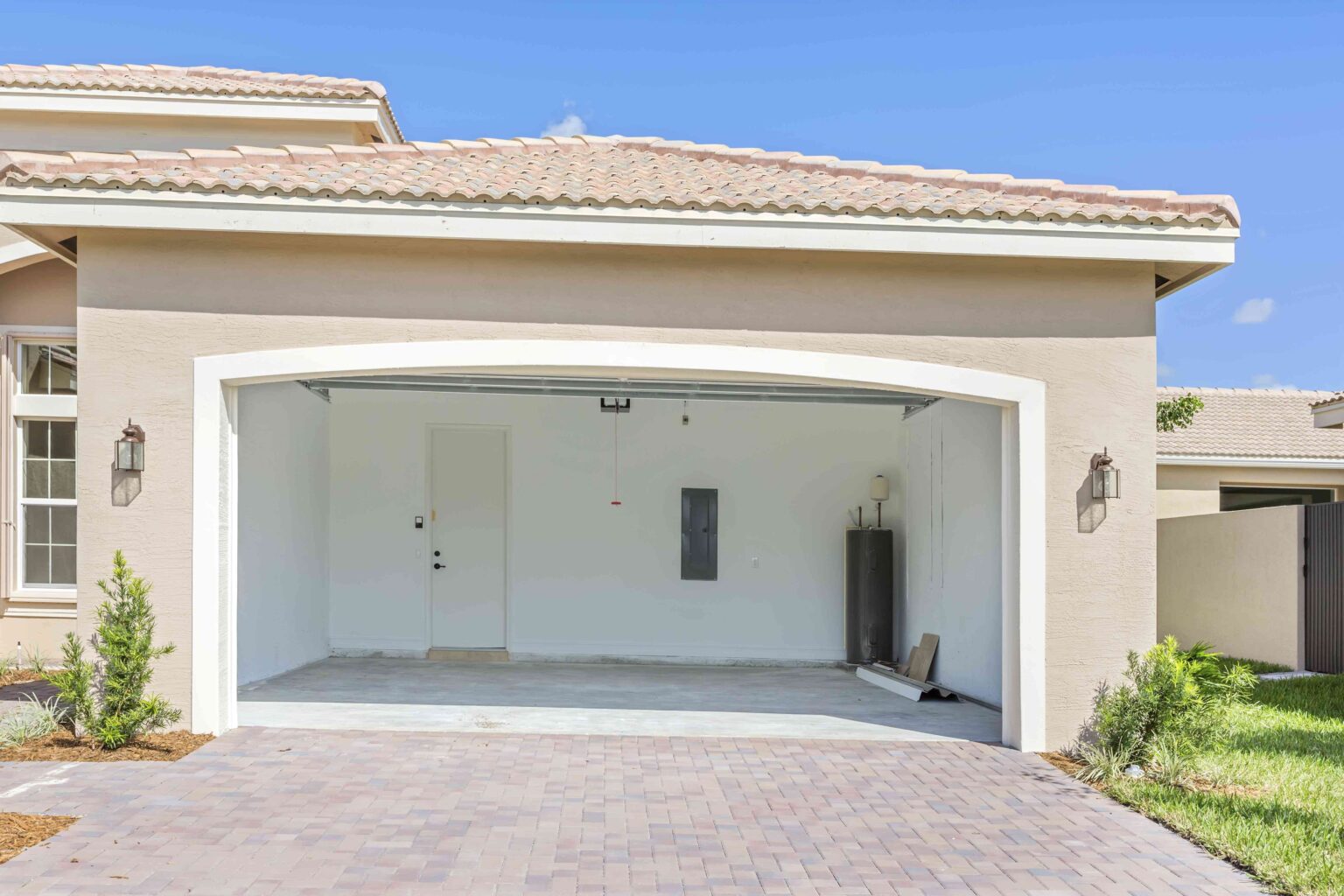If you’re looking to add a little style and color to your garage, one of the best places to start is with the floor. Standard concrete slab garage floors are functional. But with a little extra effort, they can also be attractive and even comfortable. There are many options for sprucing up a garage floor, and most homeowners have trouble deciding which way to go.
An effective way to start thinking about a new garage floor is to divide the choices into two categories: coatings and coverings. Here’s everything you need to know to choose the best option for your garage floor.
The Spruce / Madelyn Goodnight
Garage Floor Coatings
To make your garage floor look new, you can coat it entirely with a different finish. Coatings are applied in a thin layer with a roller or brush and adhere directly to the concrete floor slab. Paint and epoxy are your two main options.
Floor Epoxy
Epoxy floor coatings are sometimes regarded as a form of paint, as both are applied with paint rollers and brushes. However, the materials are quite different from a chemical and performance standpoint.
Paint hardens through evaporation of its solvent, usually water or an oil-based liquid. True epoxy coatings, on the other hand, harden using a chemical reaction between a resin and hardener (catalyst). Before you start on a garage floor epoxy job, you need to decide which style of epoxy is right for you. Whatever you choose, garage floor epoxy creates a durable, long-lasting, attractive coating for the floor.
Floor Paint
If your garage floor is stained with oil, grease, and rust, you can easily give it new life by applying concrete floor paint. Concrete floor paints can be latex or oil-based products. They are formulated with a satin, nonslip finish designed to be durable under hard traffic and to resist damage from solvents, salts, and other caustic materials.
Some latex floor paints include a small amount of epoxy resin, designed to make the finish hard and resistant to stains. Whatever paint you buy, make sure it is listed for use on concrete floors, as these products will outperform standard paint when applied to garage floors.
BanksPhotos/E+ / Getty Images
Garage Floor Coverings
The other option is to cover the garage floor with building materials you can set on top and move around if necessary. Technically, you can throw any kind of carpet or other covering on top of the floor. But if you want a surface that can withstand the rigors of routine garage life, a product manufactured specifically for garage floors is necessary. Floor tiles and floor mats fit this description.
Floor Tiles
You can cover a garage floor with the same resilient vinyl floor tiles used in other living spaces, but rigid or semi-rigid plastic, rubber, or wood composite tiles are better suited for it. These products have interlocking edges and form a slightly raised floor with plenty of strength to support vehicles.
Floor tiles may be a good choice when a concrete slab is badly stained or cracked and hard to repair. The tiles will level out some of the unevenness in the slab.
Here are some tile options:
- Plastic garage floor tiles: These are usually made from PVC or polypropylene plastic and are available in different looks. Most brands offer a variety of accessories to finish the edges and door thresholds.
- Rubber tiles: Similar to interlocking tiles, these are often used in sports facilities, children’s playrooms, and other similar locations. They are resilient and comfortable underfoot, which makes them an excellent choice for homeowners who spend a lot of time in a garage workshop.
- Wood composite tiles: Often used as an underlayment for carpet and other floor coverings, these can also serve as garage flooring. Sold in 2-foot-square panels, they support heavy weights, making them suitably strong. The tongue-and-groove edges snap together easily, and a transition strip is required at the edges where the flooring meets the garage door.
Floor Mats
The easiest method for covering a garage floor is to roll out mats made from rubber or polyvinyl plastic. Like garage floor tiles, mats can be installed over concrete floors that are slightly stained or cracked, and no prep work is necessary.
Some mats resemble rugs, others are textured, and others resemble padded gym mats. Generally speaking, mats made of easy-to-clean materials with enough thickness to be resilient underfoot will be the best choice for a garage.
Credit: TheGarageGuy.com
Repair and Preparation Concerns
Garage floor coatings and coverings shouldn’t be viewed as a means of putting damaged slabs “out of sight, out of mind” or of eliminating problems. Ensure to address any underlying damage before coating or covering your floor. These include:
- Cracked or broken slabs
- Oil and grease stains on the existing concrete
- Moisture problems
Unless properly repaired and prepared, these will eventually cause problems with most finishes you apply, especially paint and epoxy.
If you are converting your garage into a living space, or even if you just want to make your garage more comfortable, you should consider insulating the concrete slab. The best method for garage floor insulation involves laying sleeper strips and rigid foam insulation over the floor and then covering it with plywood sheets and the flooring of your choice.
Read the full article here
